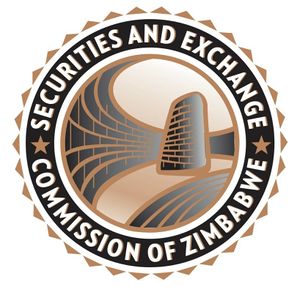Nedbank’s profit driven by fees and commissions
Nedbank Zimbabwe managed to post a profit after tax of ZiG72,54 million, in the half year to June 30, 2024, underpinned by significant growth in fees and commissions.
In a statement, Nedbank’s Managing Director, Dr Sibongile Moyo, acknowledged the complex transition in the bank’s core operations, citing the conversion from ZWL to the new local currency (ZWG) following the introduction of the Zimbabwe Gold (ZiG) currency on April 5, 2024 as an example.
“This necessitated a change in our functional currency for accounting purposes to USD,” explained Dr Moyo. This move, she noted, aligns with International Financial Reporting Standards (IFRSs) and took effect from January 1, 2024.
While the bank presents its financial statements in ZIG due to regulatory requirements, Dr Moyo clarified that the hyperinflation accounting applied in 2023 made it difficult to draw direct comparisons with the 2024 financial figures.
However, the overall performance is indicative of the bank’s ability to adapt to Zimbabwe’s dynamic economic landscape, she said.
Nedbank’s profit after tax was driven by a 50 percent increase in fees and commissions from client transactions, alongside a 27 percent growth in loans and advances to the private sector and individuals.
Dr Moyo attributed this success to the bank’s growing client base and increased transaction volumes.
“The growth in international and local payments and our main-banked customer accounts have contributed significantly to this,” she remarked.
Despite subdued trading and dealing income, largely due to reduced foreign currency supply to the interbank market, the bank maintained strong performance in its core operations.
The contribution of unrealised foreign exchange gains was limited to 15 percent of total non-funded income, reflecting the stabilisation of the ZiG currency.
However, the bank faced challenges on the funded income side, which decreased by 6 percent due to a seven-fold reduction in reference interest rates on ZiG-denominated treasury bills and loans, as announced by the Reserve Bank of Zimbabwe’s (RBZ) monetary policy in April.
Dr Moyo also highlighted the bank’s robust USD loan portfolio, with 97 percent of its loans and advances denominated in USD as of June 30, 2024.
“We continue to manage a high percentage of USD-denominated loans, ensuring that we meet the needs of our clients,” she said.
Total operating expenses for the period amounted to ZiG265,13 million, with employee costs making up 45 percent of the total.
Dr Moyo emphasised the bank’s commitment to staff welfare, while noting that technology-driven costs have risen due to increased transaction volumes. “Our cost-to-income ratio rose to 73 percent, reflecting the hardening of expenses in USD,” she explained.
The bank aims to reduce this ratio to its long-term target of 50 percent through ongoing digitalisation and automation efforts.
Nedbank’s total assets remained relatively flat at ZIG2,58 billion, but loans and advances grew by 27 percent, pushing the loans-to-deposit ratio from 57 percent to 72 percent.
The bank remains well-capitalised with shareholders’ funds of ZIG711,37 million and a regulatory core capital of US$46,42 million, giving it a solid capital adequacy ratio of 26 percent.
Looking ahead, Dr Moyo acknowledged the tough macroeconomic environment and its potential impact on the bank’s value proposition.
“We recognise the challenges ahead and remain focused on addressing client needs while ensuring value creation and robust controls,” she concluded.-ebisnessweekl











